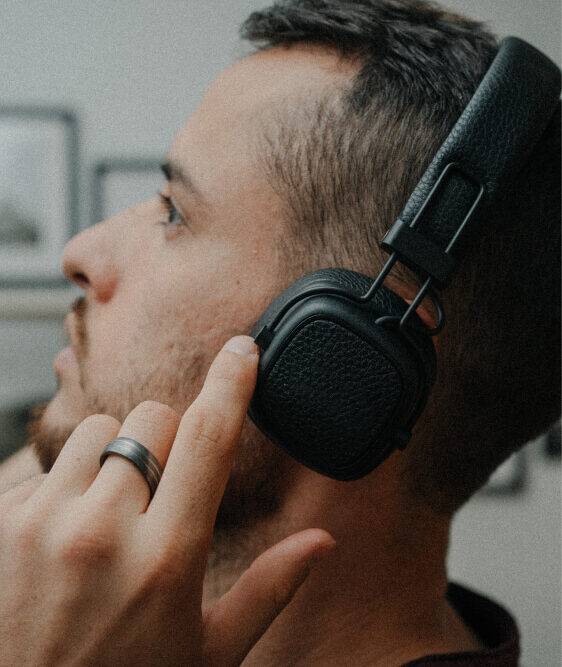When people think of Bluetooth, they commonly think of Bluetooth audio: wireless headphones and speakers, earbuds, and improved car audio experiences. Unfortunately, implementing complex audio use cases and ensuring interoperability between Bluetooth devices of different manufacture is challenging.
Most Bluetooth audio devices on the market today are based on Bluetooth classic (BR/EDR) audio profiles, such as the Advanced Audio Distribution Profile (A2DP) and the Hands-Free Profile (HFP). A2DP is commonly used for high-quality audio transmission, such as music playback, while HFP is used for voice calls and other types of audio transmission requiring less fidelity.
A2DP allows for the transmission of two-channel stereo audio and is commonly used for music playback and other applications that require high-quality audio. A2DP uses the AVDTP protocol to transport audio data between devices. It relies on other Bluetooth profiles, such as the Audio/Video Remote Control Profile (AVRCP), to handle control and signaling functions.


A2DP transmits high-quality audio with a bit rate of up to 352 Kbps (thousand bits per second) and a sampling frequency of up to 48 kHz (thousand cycles per second). This enables all devices to communicate that the standard specifies that SBC ( low complexity Sub Band Code) should be the minimum support audio compression algorithm. At the highest bit rate, the audio experience is close to CD-quality audio. A2DP is supported by Bluetooth-enabled audio devices, including smartphones, tablets, laptops, and many other Bluetooth audio devices, such as headphones and speakers.
Cloud2GND has extensive experience with classic Bluetooth audio (e.g., A2DP and Hands-Free) and ensures products interoperate to provide outstanding user experiences. We know how to develop optimized audio solutions and troubleshoot complex issues. Through our semiconductor and stack partners, we can offer licenses to multiple different audio stacks and solutions to jump-start product development.
Our latest focus is the newly released Bluetooth LE Audio profiles and specifications, which are in the process of revolutionizing Bluetooth audio.
The new Bluetooth LE Audio profiles are based on a new controller-layer feature called Isochronous Channels (ISOC). ISOC was introduced in the Bluetooth 5.2 specification and allows for the transmission of one or more fixed-rate data streams with low latency and minimal jitter, making it ideal for applications such as high-quality wireless audio. Isochronous Channels can be connection oriented (CIS) or broadcast (BIS), which can be sent to one or more devices. This new architecture opens up a wide range of previously difficult use cases, such as wireless stereo with two independent devices for the left and right channels and the use of broadcast transmissions to an unlimited number of receiving devices.
The new broadcast capability, under the Bluetooth SIG’s new Auracast™ brand, is a completely new way to deliver audio using Bluetooth. It opens up a range of new use cases, such as delivering one or more streams of audio to hearing aids and other hearing-assistance devices (hearables), providing audio streams to “unmute” the video displays often found in public spaces, and providing context-aware audio streams in a range of public, private, and commercial spaces. In addition, by embedding multiple streams into an environment, different languages or special audio streams can be offered to meet a particular user’s needs.

The new LE audio profiles are built on top of the capabilities offered by the lower-layer controller features, such as Isochronous channels, and define how devices that support the new audio features discover, connect with, configure, control and interact with each other. Lower-layer LE audio profiles provide the building blocks on which use-case-specific top-layer profiles are built.
The new LE audio specifications also introduce a new high-efficiency codec called LC3. The LC3 codec replaces the legacy Subband Codec (SBC) used by traditional Bluetooth classic A2DP and wideband HFP audio and offers higher perceived quality and lower power consumption than SBC for any given bitrate. LC3 support is mandatory for the new LE audio profiles and is licensed royalty-free when used as part of a qualified Bluetooth solution.
Cloud2GND has been working with the Bluetooth Isochronous Channels feature and LE audio profiles since before their adoption. Cloud2GND is uniquely positioned to create LE-audio-based products leveraging our unequaled experience:
Our combined knowledge and experience uniquely qualify us to help our clients transition to this new generation of Bluetooth technology which will open up many promising new use cases and opportunities.
Our Impact
“Cloud2GND brings a depth of Bluetooth protocol expertise that’s incredibly hard to find, especially in areas like LE Audio and low-level stack development. Their contributions have been key to the evolution of our stacks over the years.”


Jason Hillyard, Director of Bluetooth
Product and Technology, Synaptics
“Cloud2GND dramatically advanced our Bluetooth-based medical devices, from hardware design through iterative software development. Their ability to navigate product strategy, technical detail, and FDA requirements makes them a true development partner–not just a service provider.”


Dr. Andrew Holtman, CEO
Dandelion Medical Devices
Whether you are developing a traditional Bluetooth classic audio solution based on A2DP and HFP, or you are looking to utilize the latest cutting-edge solutions based on Bluetooth LE and Isochronous channels, Cloud2GND has the knowledge and expertise to help make your project a success.